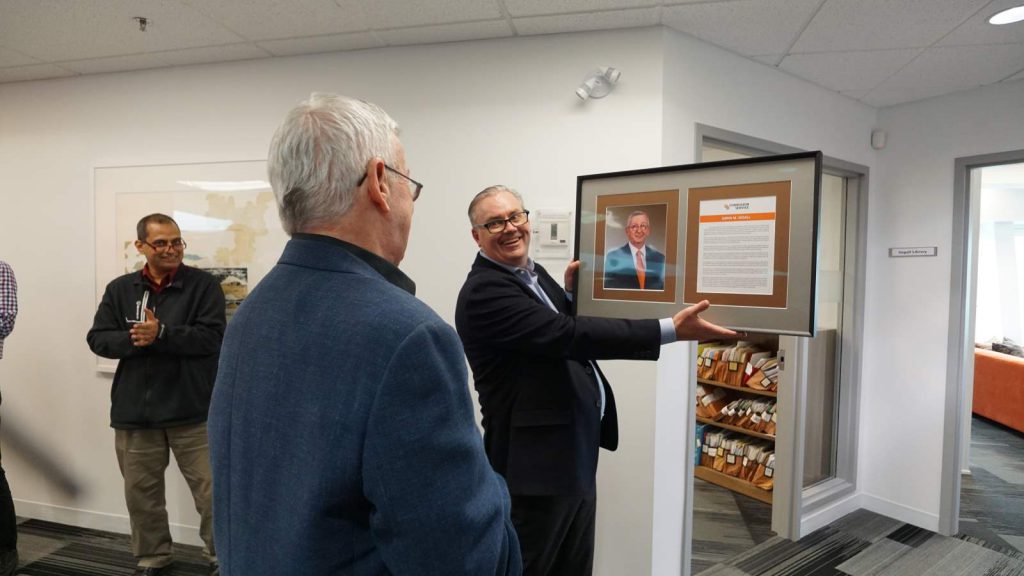Since our founding Corrosion Service has and remains a leader in the corrosion control industry, supporting the various industries in North America and around the World ensuring asset integrity by providing responsible engineering services.
As part of our continued commitment, we would like to welcome you to our electronic Library as the place to view our various technical papers written and presented since 1950 supporting, educating and advancing the corrosion industry advancement.
On your left you can select the author of interest to view all papers presented or enter a search by topic. For each, an abstract is provided and a download link for your review. We would be please to assist if you have any questions and feel free to contact us.

The Corrosion Service Library
We converted a prime corner office into a Library at our Head Office and dedicated the room to Sorin Segall because of his commitment to Corrosion Service, the numerous papers presented, the engineering mentoring within Corrosion Service and to our industry. We would be pleased for you to come and view this comprehensive library that includes various text books, relevant publications, all NACE Materials Performance magazines presented since first publication, technical bulletins and various other related corrosion related print material.
Our Technical Papers For Download
Evaluation of Classification and Prioritization Criteria Based on the Results of Direct Examinations
The ECDA process requires a continuous effort from the pipeline operator to improve the reliability of classification and prioritization criteria. Based on the results of the direct examinations, these criteria can be up-graded or down-graded as part of the retrospective evaluation and the number of […]
The efficacy of anodic protection (AP) on the wet/dry (tidal) zone of a sulfuric acid (H2SO4) tank wall has been in some doubt. The present work confirmed that AP is effective in mitigating corrosion of nitrogen oxide (NOx)-contaminated H2SO4 in both the submerged and tidal […]
The 100mV cathodic polarization criterion is being used more extensively on piping in the oil and gas industry which has prompted a discussion on the limits of its use. This paper summarizes the technical literature on the validity of this criterion with respect to elevated […]
This paper describes the challenge of integrating specific types of ECDA indications, such as AC enhanced corrosion (ACEC) and DC interference (DCI), under the prioritization criteria recommended by NACE RP0502-2002. Starting from the observation that the risk of corrosion does not always increase with the […]
The corrosion mitigation benefit of Anotection@ anodic protection (AP) systems in sulphuric acid tanks is well established. AP prevents tank wall wastage, iron contamination of acid and hydrogen grooving of tank walls. Yet, the efficacy of AP at the wet/dry (tidal) zone of tank walls […]
The paper describes the theoretical and practical aspects of merging two Indirect inspection tools (i.e. Close Interval Potential Survey and DC Voltage Gradient) into one integrated survey, as used in 2004 during an ECDA project covering more than 21 Km of gas pipelines in Southern […]
Prestressed concrete cylinder pipe (PCCP) used for water and sewer transmission service is composed of a thin wall steel cylinder, lined on the interior and exterior with cement mortar, and reinforced by prestressing wire either wrapped around the steel cylinder or embedded in the exterior […]
Under an Integrity Management Program (IMP) for natural gas transmission lines, the ECDA concept was analyzed and the process was validated from 2002 to 2004. A Plan was developed and implemented in 2004 on one 17 km pipeline and segments of two other pipelines. This […]
